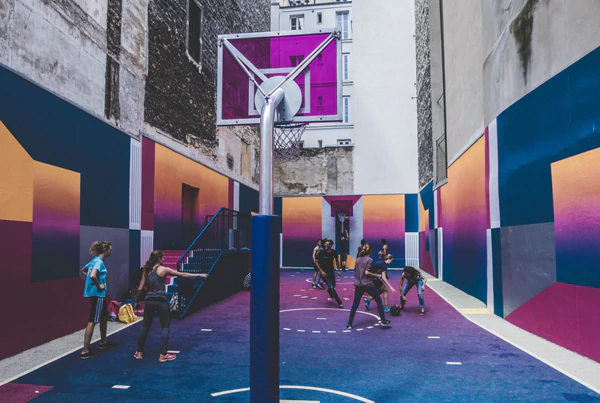Traditional sports: the quest to attract millennials

By a landslide, sports is the largest sponsorship spending category. It’s a safe haven for live content in an increasingly competitive environment where limitless entertainment options are vying for a share of audiences’ attention. Of the top 100 TV shows watched in the U.S. in 2019, 89 were live sports broadcasts.
Getting kids to play and watch traditional sports is key to the long-term survival of this sphere. While renewing one’s audience has always been on the leagues radar, it is of crucial importance now as the median age of traditional sports audiences keeps rising.
While sports audiences may have dropped, their value has increased, and sports remains one of the few platforms able to reach a mass audience in a fragmented entertainment market.
NASCAR, which many sports columnists had slated for imminent extinction, lost more than a third of its viewers, yet saw a 46% increase in TV revenue. The series also had a 58% hike in traffic on its digital platform, and the number of players on its Fantasy Live platform grew by 135%. NASCAR reaches five times as many millennials per event as MLS and only trails the NFL for that age group, making announcements of its impending demise premature.
Last year’s NFL TV audience rose by 5%, rebounding from a decline in the past two seasons. Crucially, the 2019 season’s advertising revenues are up by 14%, as are those for Formula 1, which saw a 10% increase globally in unique viewers during the 2018 season.
While these numbers are encouraging, traditional sports are almost all seeking to renew their audiences by appealing to younger fans.
Rights holders are reverting to advertising their offering with global campaigns: the PGA Tour launched ‘Live Under Par,’ which was “designed to capture and celebrate the energy and spirit of today’s TOUR,” and Formula 1 released ‘Engineered Insanity,’ an ad featuring fans at the heart of the action. Firsts for both organizations, such initiatives would have previously been unthinkable for F1, which, in the 2000s, had cultivated an elitist image before being purchased by Liberty Media in 2017.
Esports are gathering momentum, many youth no longer play in little leagues, and families don’t gather around the TV to watch shows together any more.
Gaming has surpassed both the film industry and, based on global figures, many traditional sports as well. But it’s not just esports that are driving away younger crowds.
Research by Luker on Trends states that “people younger than 24 today aren’t as interested in sports as their counterparts 20 years ago.” According to founder Rich Luker, this is because of competition for the time and attention of young people from a range of entertainment options. And, shockingly, there is yet another competitor: “The fastest-growing activity among kids now is actually nothing,” Rob Manfred, MLB commissioner was quoted as saying in the Sports Business Journal, referencing internal research.
Meanwhile, changes in content and the media landscape may very well affect the incumbent league’s business model as content moves from cable subs to OTT (over the top) or subscription alternatives, NFL RedZone from DirecTV, DAZN, YouTube TV, or ESPN+, to name a few.
Let’s not forget the company that commands one of the largest market capitalizations in the world. Apple has a dedicated team to developing on-demand notifications, highlights, and curated sports content. Apple TV+ was launched without a live sports offering, but its deep pockets—a reported $1 billion—will enable it to eventually create original sports content.
When the game ends, audiences will no longer be limited to watching the post-game show on traditional cable channels. The wide array of online and social sports content is mind-boggling. Athletes have more direct access to audiences than ever, which they can exploit to leverage their personal brand and raise their profiles—making them even more valuable for securing commercial revenue sources that go beyond their regular salaries.
New platforms such as OTRO, The Players’ Tribune, and Uninterrupted allow athletes direct and curated contact with their audience, thus enabling them to bypass broadcasters that rely heavily on sports shows and off-field content. If successful, these platforms will have their own audience, their own data, and, of course, their own corporate partners. The jury is still out as to the viability of these initiatives. It’s worth noting, however, that these platforms have financial backing from successful former players and renowned investors.
Will all these shifts and initiatives be enough to lure in a younger audience to watch traditional sports and attend games? The jury is still out, but all leagues understand the importance of the issue and are throwing spaghetti on the wall to see what sticks.
To view all the sources and citations, click here.
Photo by Ketut Subiyanto from Pexels
